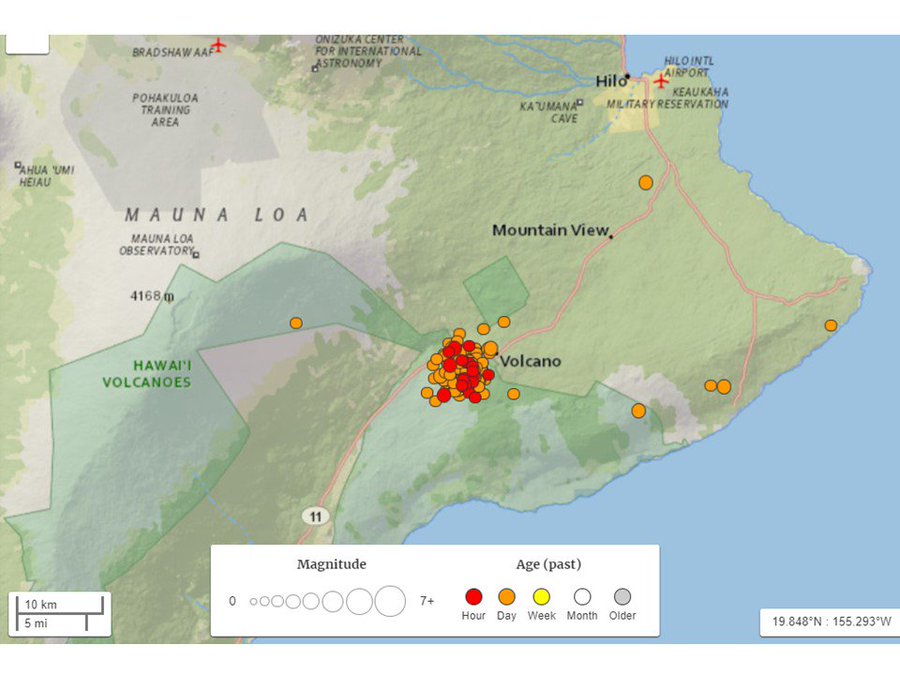Kilauea Volcano Is Swallowing Chunks Of A National Park
We imagine volcano eruptions shooting lava and ash into the sky from the summit of giant lava cone mountains, but the ongoing eruption of Kilauea, which is a complex shield volcano on the Big Island of Hawaii, has been much different. Over the past several weeks magma beneath Kilauea's Halemaʻumaʻu Crater at its summit has been flowing away from the deep crater chamber and into the eastern rift zone on the island's southeastern corner.
All that magma has been feeding the eruption of a series of fissures in the Puna region that have sent thousands of acres of lava flowing over the landscape, destroying hundreds of homes and evaporating entire lakes on its way to the ocean where it has also reshaped the coastline.
But the movement of magma away from Kilauea's summit has had consequences for Halemaʻumaʻu Crater as well. The summit crater has been subsiding , causing a cycle of earthquakes, rock falls as the walls of the crater fall in on themselves triggering explosive releases of ash, steam and rock.
In a 24 hour period over this past weekend, the U.S. Geological Survey reported over 300 earthquakes near the summit that registered over a magnitude 2.5. Typically at least one temblor per day has registered over a magnitude 5.0.
The summit crater lies within Hawai'i Volcanoes National Park, and many of the park buildings have sustained significant damage. Park officials recently retrieved artifacts from the Jaggar Museum and it's questionable whether the buildings will ever be occupied again.
The subsidence has led to the significant widening of the crater itself. It has already consumed an out-of-service parking lot that once served visitors looking to get a glance of Kilauea's innards.
Science teacher Christopher Becke put together one of the most dramatic illustrations of the summit crater's transformation over the past several weeks by taking daily images from a USGS webcam and then running them forward and backwards in the below GIF. Keep an eye on the left edge of the crater to see subsidence and the slumping of the rim in action.
You can also monitor the action at Halemaʻumaʻu Crater via the below livestreaming USGS webcam to see the reshaping of an epic American landscape in real time:
Craziest of all, this could be just the beginning of the violent geology taking place on the island of Hawaii.
"I think it's most likely that there will be a long-term extension of activity," said geologist Thomas Wrightwho has worked for the Hawaiian Volcano Observatory and the U.S. Geological Survey.
"There have been ongoing explosions and earthquakes, and historically, activity at Kilauea has been linked to activity at Mauna Loa, so we really don't know what the future is... Kilauea is potentially, in my view, one of the most dangerous volcanoes in the world."



No comments:
Post a Comment